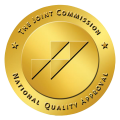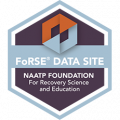Stress is a silent and very destructive force that is affecting people every day all over the world. According to the US Department of Veterans Affairs, at least 6 out of every 100 Americans, or 6% of the total US population, will suffer from post-traumatic stress disorder (PTSD) at some point in their lives. With so many suffering from the negative effects of unprocessed stress, it is no wonder that therapists who treat stress are among the top online searches in any given state. One example is the high volume of online searches for a PTSD therapist in Kokomo, Indiana.

PTSD is commonly associated with soldiers and with people who have been exposed to great conflict or acts of violence, such as members of law enforcement, although the condition is not limited to these people. People who are not able to properly process stress could eventually develop PTSD. This is why victims of child abuse or repeated domestic abuse are also among those who are prime candidates to develop PTSD.
This condition is particularly prevalent because being exposed to trauma also comes with a degree of stigma with it. Victims of abuse are immensely hesitant to come forward to report the crime, let alone seek trauma therapy for it for fear of the backlash. Veterans often seek help for their PTSD, but because of the government’s inability to facilitate treatment for all service people who need it, many are left to deal with their own troubles. This is why it is not uncommon to find veterans who have also developed a substance abuse disorder, as they desperately try to find a way to deal with the adverse effects of their condition. These people will need dual diagnosis treatment for their PTSD and addiction problem. People who develop PTSD due to some horrific accident or life-threatening scenario also develop a great aversion to anything that is even remotely related to the event that caused their trauma.
What are the Symptoms of PTSD?
People with PTSD will often relive the event, or behave as if the event had just recently happened because of the way the trauma affects the brain. It manifests as repeated, involuntary memories, distressing dreams, or flashbacks of the traumatic event that seem fearfully real. The flashbacks are often so vivid that people tend to react in the same way they did when the traumatic event happened, such as immediately seeking cover when they hear a loud noise, becoming violently disturbed when they see any kind of flame or suffer pains and aches as if they were having a heart attack.
There are many people who manifest their PTSD by actively avoiding anything that could bring about a flashback or is related to the traumatic event in some way. People who almost drowned or lost a loved one to drowning will do everything in their power to not travel or even be near a body of water. The same goes for people who are deathly afraid of flying. While in many cases there is a way around the fear that comes with the trauma, in some cases there is simply no other way to go about it than by sedating the person to the point they are unaware of what is going on around them, thereby preventing their instinct to do everything they could to avoid the trauma.
As PTSD also falls under the classification of being an anxiety disorder, some of the symptoms also tend to cross over into the area of other anxiety-related conditions. It is not uncommon for someone with PTSD to suddenly fall into a gloomy mood when their PTSD is triggered, such as people who experienced great loss and come across a similar scenario experienced by someone else. They could react to the news of the scenario as if they were the ones who experienced the loss and appear as if they were grieving. Children who were severely bullied while young will suddenly behave irrationally when something akin to what they went through as a student comes up, or are exposed to something related to the memory of it, such as when school reunions.
Similar to how people with PTSD react to specific memories, there are also incidents where they become irritable, belligerent, and even directly violent when exposed to something that brings them back to their trauma. This is often seen in people who were beaten as a child and then react violently when they see another child being beaten. Conversely, the person could be violent towards someone else who reminds them of the people involved in their trauma, such as a cruel father or mother figure. This is also seen in combat veterans who suddenly fly into a rage or feel the desire to hurt someone who reminds them of the “enemy” or opposing forces when they were still in the service.
Are there Related Conditions to PTSD?

Acute stress disorder is similar to PTSD in that it is caused by exposure to a significant or traumatic event. On top of that, the symptoms are also quite similar, although there are marked differences in the occurrence of the symptoms. PTSD could manifest either soon after the event or even years after the event when it is made to resurface through some trigger. The symptoms of acute stress disorder typically occur between three days and one month after the actual event. As the symptoms of acute stress disorder are highly similar to PTSD, around 50% of people who have it do develop PTSD eventually. Similar to PTSD, people with acute stress disorder are plagued with vivid memories, flashbacks, and nightmares about the traumatic event.
Acute stress disorder is typically treated with psychotherapy, including cognitive behavior therapy which helps in controlling the symptoms and preventing them from getting worse. If treatment is received in time, this condition could be prevented from developing into full-blown PTSD. Medications such as SSRI antidepressants are also often used to mitigate the effect of the symptoms.
More than people who simply have a bad attitude towards others, the term “maladjusted individual” applies more to people with an adjustment disorder, as these are the people who have never been able to cope or move on from the state they were left in after experiencing a stressful life event. The change in their behavior is quite observable as they are described as having “a response to the stressor or event that is generally more severe or more intense than what would be reasonably expected for it”.
People with an adjustment disorder, however, cannot help how they react, as they could experience a range of emotions including
- Persistent feelings of tenseness
- Pervading sense of sadness or hopelessness
- Desire to withdraw from other people
- Urge to suddenly act defiantly
- Engage in impulsive behavior
They could also feel physical manifestations including
- Uncontrollable tremors and shaking
- Palpitations
- Hyperventilation
- Headaches
- Shortness of breath
The symptoms of adjustment disorders typically begin within three months of a stressful event and usually last no longer than six months after the event or its related consequences have ended. This type of anxiety disorder is becoming increasingly popular as people seemingly fail to deal with significant events or changes in life. Recent reports indicate that roughly 5% to 20% of the patients in an outpatient mental health facility have a principal diagnosis of adjustment disorder.
Children or young adults are often the most vulnerable to conditions that result from being exposed to great stress or trauma. Disinhibited social engagement disorder is typically found in children aged two and below who experienced severe social neglect or deprivation. This condition is proof that children who never had their basic emotional need for comfort, guidance, and affection satisfied grow up to become adults who could never form stable relationships. The lack of the conditions that create bonding moments during the formative years prevents these children from understanding the concept of caring enough to be with someone else.
The irony of this condition is that it also removes the sense of the child to instinctively tell which people would care for them and which ones would do them harm. Children who suffer from this condition have been known to go off with an unfamiliar adult with minimal or no hesitation. To make matters worse, developmental delays including the development of cognitive skills and language have been observed to co-occur with this disorder.

How is PTSD Treated?
Stress itself is unavoidable, people experience it the moment they open their eyes in the morning. What can be done about it is helping the person to relieve the stress that they could through different ways and dealing with whatever stress they have that is proving to be persistent in staying with them.
Cognitive processing therapy (CPT) is a form of trauma-focused CBT that is aimed at helping the patient come to terms with the traumatic event or events that is causing problems. This necessarily involves talk therapy to help the therapist understand the nature of the traumatic event that gave rise to PTSD. From there, the therapist could begin to help the patient in examining, understanding, evaluating, and eventually processing the thoughts and perceptions that are preventing the patient from effectively moving on from the traumatic event.
CPT is typically a 12-week treatment program with around 60 to 90-minute sessions per week. Activities done during sessions include encouraging the patient to write in detail what they remember about the traumatic event. This activity will help the patient fill in any possible gaps regarding the traumatic event so that they get a better understanding of what really happened, as part of the difficulty in processing the trauma is the fact that most people don’t even fully understand what really happened. This could be because their brain was actively trying to shield itself from the horrible details, or there could be details about the event that don’t make sense, and writing about it could shed light more light on it. This treatment can be administered through outpatient, intensive outpatient or partial hospitalization in Indiana at First City Recovery.
In many instances, the trauma that has gone unresolved for so long is due to the fact that the patient does not want to relive the details of what happened, as it could be immensely painful or horrifying for them. Much like daily dilemmas, issues that are not dealt with directly will remain problematic, and the only way to resolve this is usually head-on. Prolonged exposure therapy attempts to relieve the patient of the stress of the trauma by having them confront it. This does not mean that they have to be exposed to war, conflict, or accidents once more, but an in-depth discussion about it, which could be something that they have been avoiding all this time.
Being exposed to it could naturally trigger a physical reaction in the patient, such as difficulty in breathing or even hyperventilation as they get riled up and their mind goes into a fight-or-flight state. This is why this therapy comes with training in breathing techniques that are designed to ease the anxiety attack that comes with the confrontation.
By gradually facing all the details that are causing the patient fear, anxiety, and paranoia, they develop a tolerance to it until such time as they are desensitized enough to look at the event objectively. Once they are able to do this, they could discuss the matter more freely and reach a logical resolution to their issues.
There are some people who are simply unable to go back to the traumatic event without suffering an immense amount of anxiety in the process. This anxiety often causes them to completely shut down, and in this state, no progress in treatment could be made. This is because their brain is simply unable to confront the trauma, and without any kind of understanding or processing going on with the trauma, no resolution could be done.
Eye movement desensitization and reprocessing (EMDR) is an approach where the brain is distracted by a stimulus such as a flashing light or prominent sound while the patient is concentrating directly on the trauma or the details that surround the traumatic event. This method is basically confronting the issue without really confronting it. The objective is to remove the sharp, stark, and pointed reaction the brain has when confronted directly with the details and facts relevant to the trauma. The repetitive action of this approach is similar to “sanding off” a rough surface until it is no longer abrasive. EMDR is typically done over a period of 3 months with weekly sessions.
Stress inoculation training is another approach that skirts around the actual trauma in an attempt to desensitize the brain to whatever it is about the trauma that is so unbearable to the patient. This approach does not deal with the details of the traumatic event but focuses instead on what kind of reaction the patient has to the event.
In almost every scenario where PTSD induces an anxiety or panic attack in the person, it typically causes a chain reaction in the person that builds to the point where it is unmanageable. One of the initial reactions to come out is the sudden tension that grips the body. This approach teaches the patient to deal with these initial reactions so that it does not cascade into something much worse. Like EMDR, this approach makes use of breathing techniques that calm the patient, accompanied by massage techniques that put the body in a more relaxed state, thus mitigating any adverse physical reactions that make dealing with stress even more difficult.
You Don’t have to Deal with Trauma Alone. Let First City Recovery Help You Through It


















